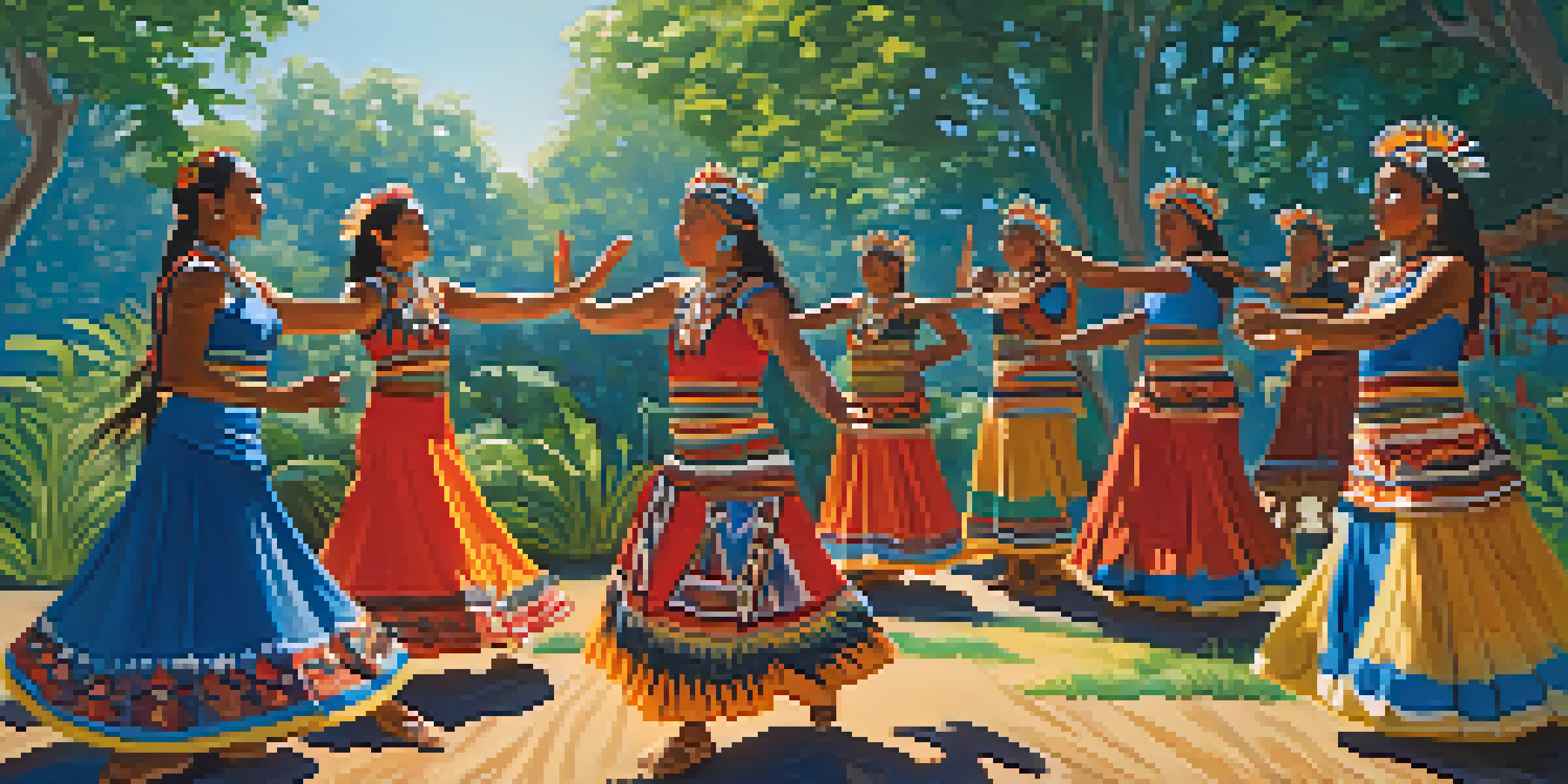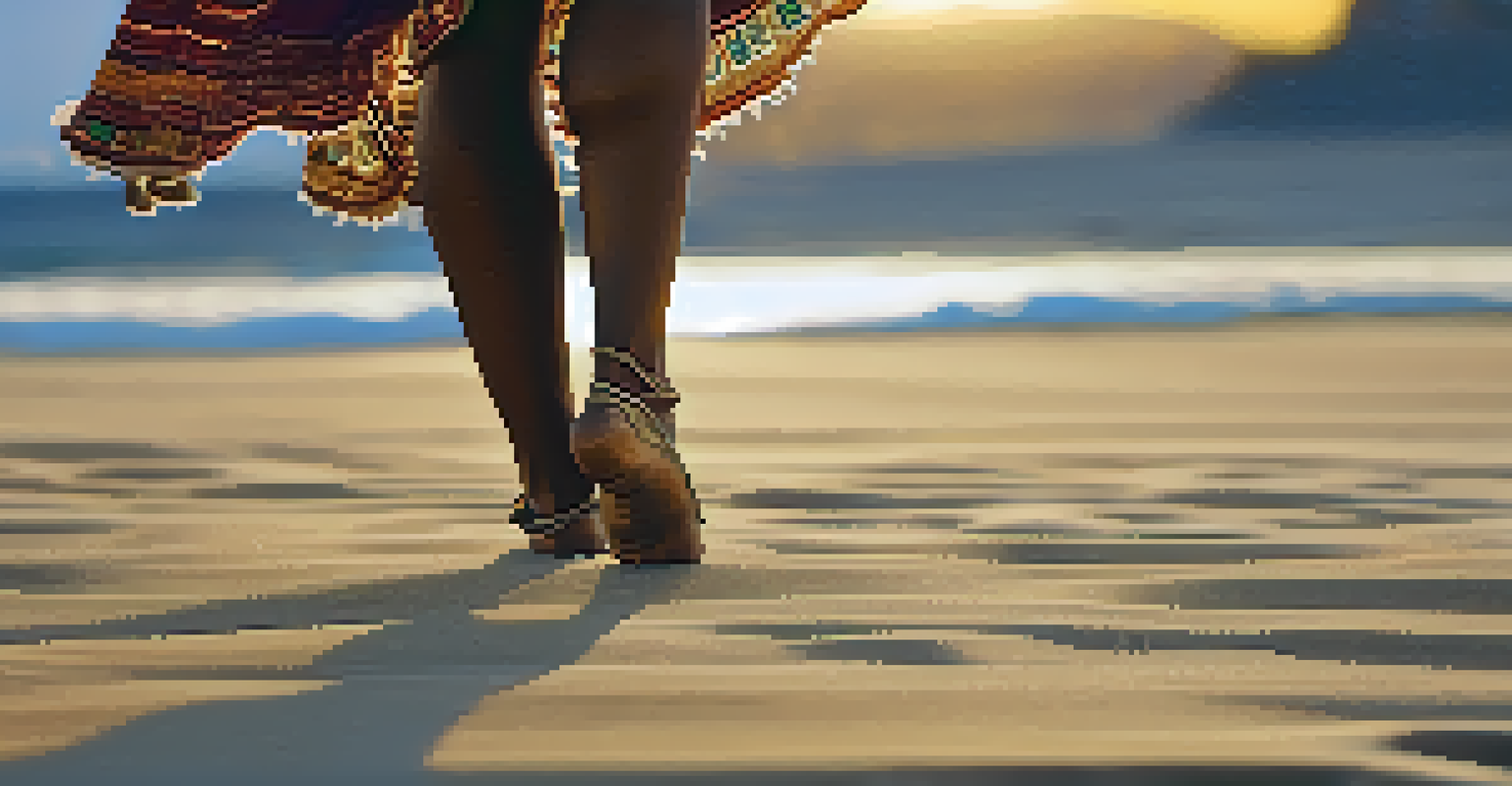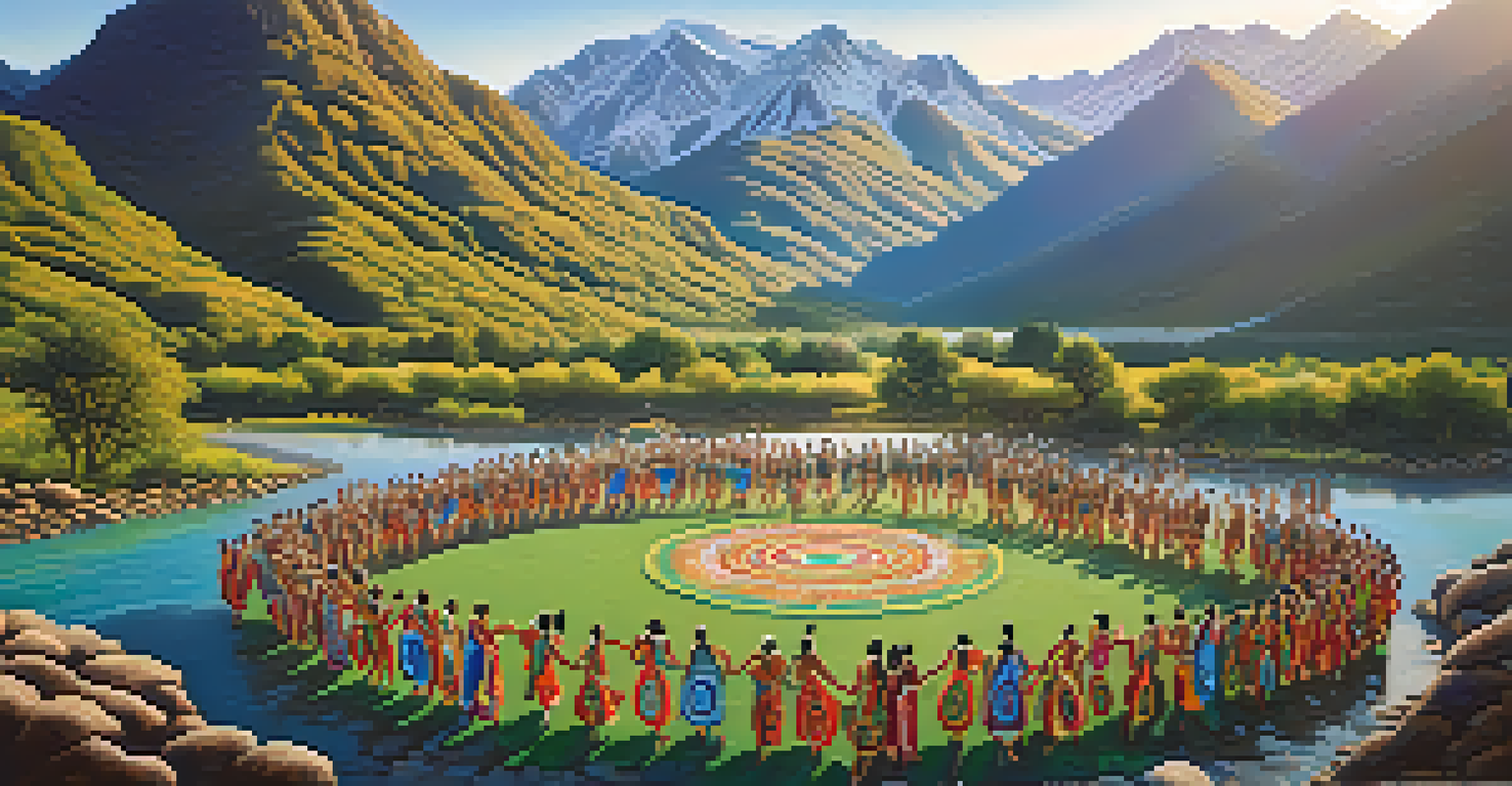Dance as a Healing Ritual in Indigenous Spiritual Practices

Understanding Dance in Indigenous Cultures
Dance is not just an art form; in many Indigenous cultures, it is a profound expression of spirituality. It often serves as a medium for storytelling, connecting the dancer to their ancestors and the natural world. Through rhythmic movements and vibrant attire, dancers convey stories that reflect their community's history and values, allowing traditions to be passed down through generations.
Dance is the hidden language of the soul.
In these cultures, dance is deeply intertwined with their spiritual beliefs, embodying the essence of life, death, and rebirth. It's a way to honor the spirits, celebrate the cycles of nature, and recognize the interconnectedness of all beings. By participating in these dances, individuals tap into a shared cultural identity that fosters a sense of belonging and continuity.
Moreover, dance is often associated with specific rituals and ceremonies, where its role extends beyond mere performance. It can be a channel for invoking healing energies, seeking guidance from the spirit world, or marking significant life events. This sacred aspect of dance reinforces its importance within Indigenous spiritual practices.
The Healing Power of Dance
Dance as a healing ritual is prevalent among various Indigenous communities around the world. It is often employed to address physical, emotional, and spiritual ailments, acting as a form of therapy. The rhythmic movements and communal participation create an atmosphere of support, fostering emotional release and collective healing.

For instance, in some Native American traditions, healing dances are performed to restore balance and harmony to an individual who is suffering. These dances might include specific songs and movements that are believed to resonate with the healing energies of the universe. Participants often report feelings of rejuvenation, peace, and connection after engaging in these rituals.
Dance as Spiritual Expression
In Indigenous cultures, dance serves as a profound expression of spirituality, storytelling, and a connection to ancestors and nature.
In addition, the act of dancing together helps to strengthen community bonds. It fosters a sense of unity and shared purpose, reminding participants that they are not alone in their struggles. This collective healing approach highlights the importance of community support in Indigenous cultures, where individual wellness is often seen as interconnected with the health of the entire community.
Dance as a Form of Expression
In Indigenous cultures, dance serves as a powerful form of self-expression, allowing individuals to communicate their feelings and experiences. Through movement, dancers can express joy, sorrow, love, and loss, providing an outlet for emotions that may be difficult to articulate. This non-verbal expression can be particularly healing for those who have experienced trauma.
The dance is a poem of which each movement is a word.
Each dance often carries its own meaning and significance, reflecting the dancer's personal journey or the collective experience of the community. For example, a dance might commemorate a significant event, such as a harvest, or serve as a tribute to loved ones who have passed. Such expressions help keep memories alive and honor the legacies of those who came before.
Moreover, the vibrant costumes and music that accompany dance add layers of meaning and emotion. They transform the experience into a sensory celebration of life, inviting participants and spectators alike to engage deeply with the performance. This rich tapestry of sound, movement, and visual art amplifies the healing potential of dance.
Rituals and Ceremonies Featuring Dance
Many Indigenous rituals and ceremonies incorporate dance as a central element, often marking significant life transitions. From birth to puberty, marriage, and death, dance symbolizes the various stages of life and the accompanying changes. These rituals serve to honor the journey and provide a sense of closure and celebration.
For instance, a coming-of-age ceremony may include dance as a way to welcome a young person into adulthood. This ritual not only instills cultural values but also emphasizes the importance of community support during pivotal life moments. The collective participation in dance creates a shared experience that reinforces social bonds.
Healing Through Collective Dance
Dance acts as a therapeutic ritual that promotes emotional release and community bonding, addressing physical, emotional, and spiritual ailments.
Additionally, ceremonial dances often involve the use of traditional songs and chants that carry spiritual significance. These elements enhance the ritual's power, connecting participants to their ancestors and cultural heritage. By engaging in these time-honored practices, communities affirm their identity and strengthen their spiritual connections.
The Role of Nature in Dance Rituals
Nature plays a crucial role in Indigenous dance rituals, often inspiring the movements and themes of the dances. Many dances are performed outdoors, in natural settings that enhance the spiritual experience. The connection to the earth, sky, and water reinforces the belief in the interconnectedness of all life forms.
For many Indigenous peoples, the movements in dance are a reflection of natural phenomena, such as the flow of water or the sway of trees. This mimicry serves as a reminder of humanity's relationship with the environment, emphasizing respect and stewardship. By embodying these elements through dance, individuals express gratitude and reverence for nature.
Furthermore, seasonal changes often dictate the timing of dance rituals. For example, spring dances may focus on renewal and rebirth, while autumn dances could celebrate harvest and gratitude. This cyclical approach underscores the importance of living in harmony with the rhythms of nature, a fundamental principle in Indigenous worldviews.
Contemporary Relevance of Dance in Healing
In today's world, the healing power of dance continues to resonate, not just within Indigenous communities but across cultures. Many are recognizing the therapeutic benefits of dance as a form of expression and healing. Workshops and programs that incorporate dance are increasingly popular, promoting mental and emotional well-being.
Healing through dance has also gained attention in therapeutic settings, where it is used to support individuals dealing with trauma, anxiety, and depression. Dance movement therapy, for example, encourages participants to express themselves through movement, fostering personal growth and healing. This modern approach highlights the timeless relevance of dance as a healing modality.
Cultural Significance of Dance Rituals
Dance plays a central role in rituals and ceremonies, marking significant life transitions and reinforcing cultural identities and community support.
Moreover, the revival of Indigenous dance practices is helping to preserve cultural identities and promote healing in Indigenous communities. As more people engage with these traditions, they not only honor their heritage but also create spaces for healing and connection. This blending of ancient practices with contemporary wellness trends illustrates the enduring power of dance.
Conclusion: The Enduring Legacy of Dance in Healing
The significance of dance as a healing ritual in Indigenous spiritual practices cannot be overstated. It serves as a vital tool for expressing emotions, honoring traditions, and fostering community connections. Through dance, individuals can find solace, strength, and a sense of belonging, making it a powerful force for healing.
As we explore and appreciate these rich traditions, it’s essential to approach them with respect and understanding. Recognizing the cultural context and significance of dance in these communities helps foster deeper connections and appreciation for their wisdom. This awareness can bridge gaps between cultures and promote healing on a broader scale.

In a world that often feels disconnected, dance reminds us of our shared humanity. By embracing dance as a healing practice, we not only honor Indigenous traditions but also acknowledge the universal language of movement and its power to heal and unite us all.